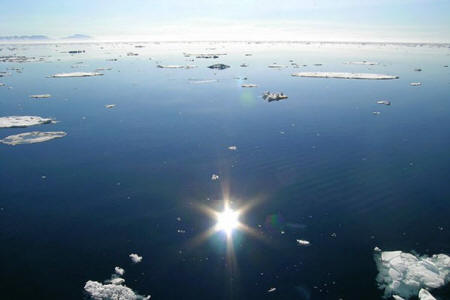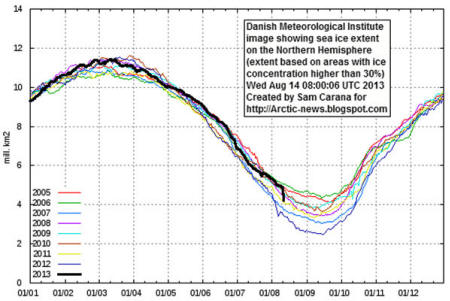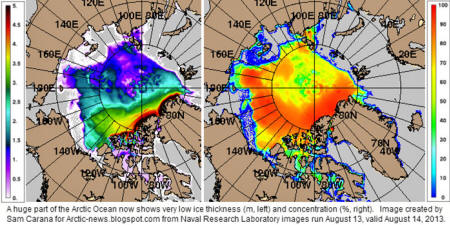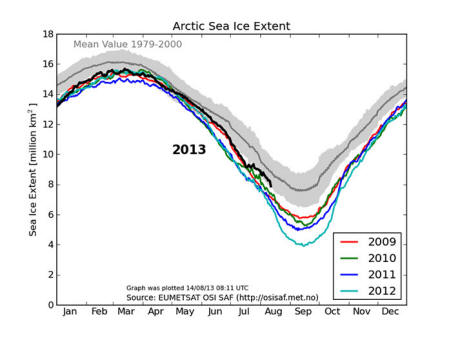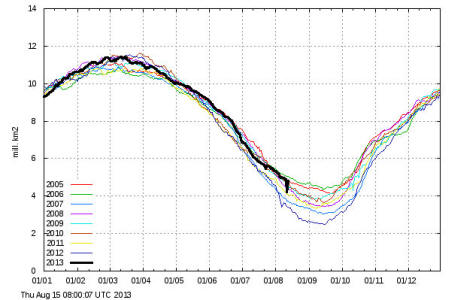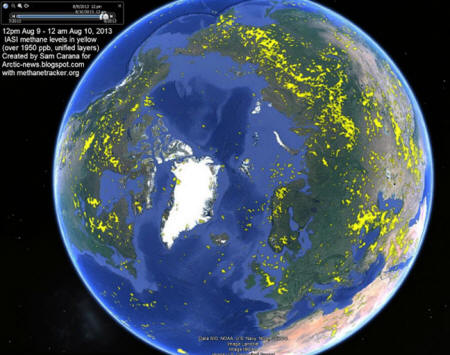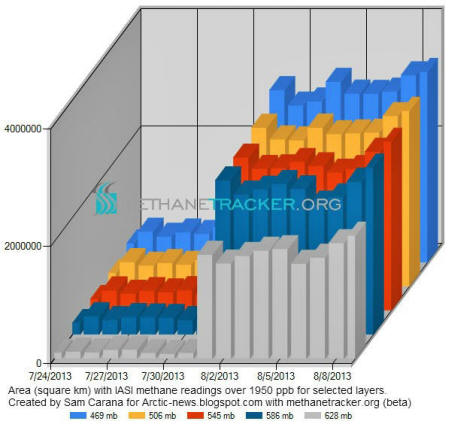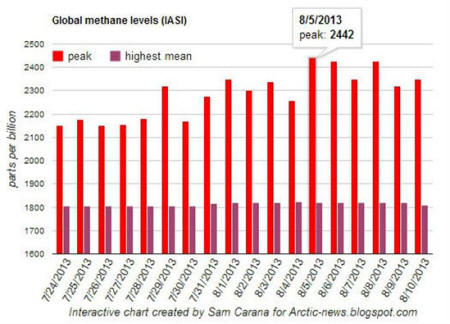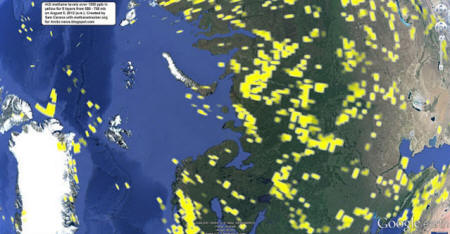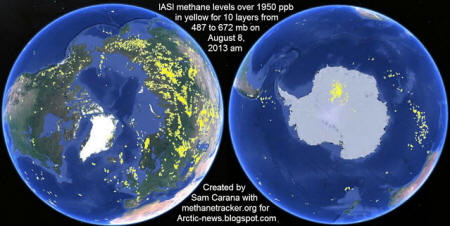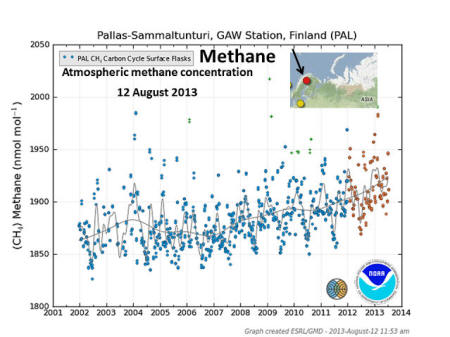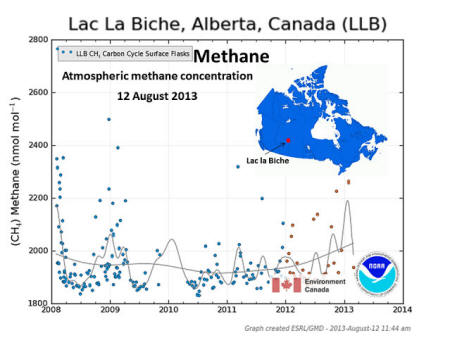Arctic Sea Ice has declined dramatically recently.
The recent image below, by the
Danish Meteorological Institute,
shows the decline in extent over the
past few days, with extent calculated by
including all areas with ice
concentration higher than 30%.
As the above image shows, sea ice extent
(30%+ concentration) is now lower than
any other year, except 2007 and 2012.
Moreover, the sharp decline looks set to
continue.
Ice volume and concentration have
dropped dramatically, partly as a result
of the
cyclone that hit the Arctic Ocean a
few days ago.
The eye of
the cyclone is still visible almost
exactly above the North Pole on the
Naval Research Laboratory image
below on the right, where sea ice
concentration appears to form a circle.
The sea ice looks set for an all-time record low; all this thin ice looks set to disappear over the next few weeks.
The graph below, also by the
Danish Meteorological Institute, calculates
sea ice extent by including all areas
with 15% or more ice concentration.
The above graph also shows a steep recent descent, although not as pronounced as in the graph at the top that includes spots with 30% or more ice concentration.
The graph at the top better illustrates recent drops in ice concentration from, say, 40% to 20%, which can occur quite abruptly due to the impact of a cyclone.
The Danish Meteorological Institute has meanwhile produced a more recent version of the graph based on spots with 30% or more ice concentration (added below).
The above graph shows an August 15 extent that appears to be back in line with the earlier trend.
At first glance, it may appear as if the sea ice has largely recovered from the impact of three cyclones that have hit the Arctic Ocean over the past two months.
However, these cyclones are likely to have contributed to the appearance and persistence of thin spots in the ice close to the North Pole. This phenomenon was earlier described in posts such as Thin Spots developing in Arctic Sea Ice.
The conclusion remains the same as the
one drawn then in that post, i.e. that
for years, observation-based projections
have been
warning about Arctic sea ice
collapse within years, with dire
consequences for the Arctic and for the
world at large.
Cyclones can speed up this collapse.
On this point, it's good to remember what Prof. Peter Wadhams said in 2012:
"...apart from melting, strong winds can also influence sea ice extent, as happened in 2007 when much ice was driven across the Arctic Ocean by southerly winds (not northerly, as she stated).
The fact that this occurred can only lead us to conclude that this could happen again. Natural variability offers no reason to rule out such a collapse, since natural variability works both ways, it could bring about such a collapse either earlier or later than models indicate.
In fact, the thinner the sea ice gets, the more likely an early collapse is to occur.
It is accepted science that global warming will increase the intensity of extreme weather events, so more heavy winds and more intense storms can be expected to increasingly break up the remaining ice, both mechanically and by enhancing ocean heat transfer to the under-ice surface."
Hopefully, more people will realize the urgency of the situation and realize the need for a comprehensive and effective plan of action as described here.


